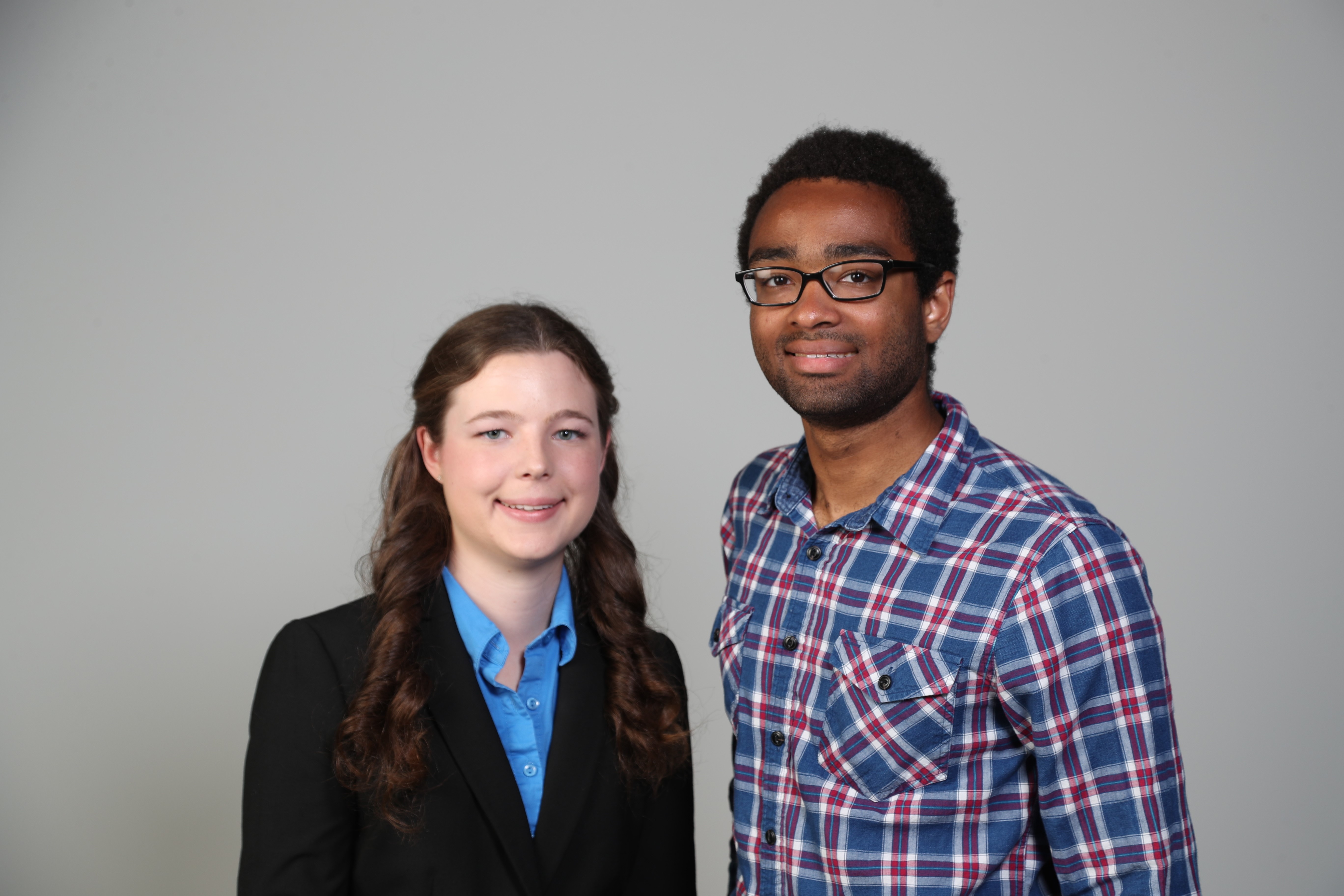Baylor University Seniors Selected for National Science Foundation Graduate Research Fellowships



Media Contact: Lori Fogleman, Baylor University Media and Public Relations, 254-710-6275
Follow Lori on Twitter: @LoriBaylorU
Follow us on Twitter: @BaylorUMedia
by Gabrielle White, student newswriter, Baylor University Media and Public Relations
WACO, Texas (April 26, 2019) – Baylor University seniors Garrett Williams, a physics and chemistry major from Norman, Oklahoma, and Catherine Arndt, a physics major from Highland Village, Texas, have been selected to participate in the 2019 National Science Foundation Graduate Research Fellowship Program, the oldest graduate fellowship program in the science field.
The NSF Graduate Research Fellowship Program recognizes and supports outstanding graduate students in NSF-supported science, technology, engineering and mathematics disciplines who are pursuing research-based master’s and doctoral degrees at accredited United States institutions.
Fellows chosen for the program receive a three-year annual stipend of $34,000 along with a $12,000 cost of education allowance for tuition and fees, paid to the institution; opportunities for international research and professional development; and the choice of where to conduct their research at any accredited U.S. institution of graduate education.
“This experience showed me what a big world is out there and gave me confidence that I can look at other candidates not as superiors, but as colleagues,” Williams said. “Not only is the stipend above average for graduate students, but being an NSF Fellow will afford my professional development opportunity that will assist in my career as a physicist.”
The fellowship application process began last summer and continued throughout the year with recipients being announced in the spring. The application package required a three-page relevant background and future goals statement, a two-page graduate research statement and three reference letters.
“The application process, although intense, was a very good learning experience and will influence my future fellowship applications, grant proposals and publications,” Arndt said. “During the process, I received invaluable feedback from several faculty from both Baylor University and the University of Rochester’s Institute of Optics. Our applications needed to exhibit proficiency in our field to experts outside our niche of research.”
Arndt will pursue her doctorate in the Applied Physics Graduate Program at Rice University, while Williams will attend the Physics Ph.D. program at the University of Illinois in Urbana-Champagne, the top-ranked university in the country for condensed matter physics.
Arndt felt led to apply for the program to support her graduate studies and provide more stability during her graduate research. Her success, she said, can be attributed to her academic courses and significant research under her mentor Howard Lee, Ph.D., assistant professor of physics. Lee recently received a five-year, $500,000 Early Career Development (CAREER) Grant from the NSF for development of ultra-thin, nanoscale optical films with electrically tunable properties.
“Catherine is a very talented and extremely hard-working scientist,” Lee said. “More importantly, she has a strong passion on photonics research and wants to keep doing research in an academic setting. These are very important factors for pursuing good research and to be a successful scientist. Her experiences, research skills and the proposed research on nanophotonics satisfy the ‘intellectual merit’ standard that NSF is looking for.”
The fellowship enables Arndt to focus on specific research projects rather than the financial support of the group, she said.
“The fellowship combined with the flexible curriculum of the applied physics program at Rice University allows me to focus on nanoplasmonics and nanooptics without compromising my studies in physics,” Arndt said.
Williams decided three weeks before the deadline to apply. He first heard of the fellowship from Arndt, and then met with Christina Chan-Park, a STEM thesis librarian in the Baylor Libraries, to discuss personal struggles. Williams was inspired to go forward with the application by Pearl Beverly, director of multicultural affairs at Baylor, who told him to “know your best, do your best and let God take care of the rest.”
“Through Garrett’s undergraduate research and fellowship application process, he has showed his potential and talents as an outstanding future scientist,” said Zhang Zhenrong, Ph.D., associate professor of physics. “With the broad solid background built from both chemistry and physics as a double major, he has a genuine intuition on how to approach a research challenge. He is determined, persistent, responsible and organized.”
NSF Fellows are anticipated to become experts who can contribute significantly to research, teaching and innovations in science and engineering. These individuals are crucial to maintaining and advancing the nation's technological infrastructure and national security as well as contributing to the economic well-being of society at large.
“Along with graduate study and research, I plan to give lectures to multicultural affairs departments at universities across the country,” Williams said. “I want to present physics to these departments to engage the underrepresented community and promote a love for physics and pursuit of physics in higher education. I plan to continue this outreach projects over the course of my graduate and professional career as a physicist.”
Since 1952, NSF has funded more than 50,000 Graduate Research Fellowships out of more than 500,000 applicants. Currently, 42 Fellows have gone on to become Nobel Laureates, and more than 450 have become members of the National Academy of Sciences. In addition, the Graduate Research Fellowship Program has a high rate of doctorate degree completion, with more than 70 percent of students completing their doctorates within 11 years.
ABOUT BAYLOR UNIVERSITY
Baylor University is a private Christian University and a nationally ranked research institution. The University provides a vibrant campus community for more than 17,000 students by blending interdisciplinary research with an international reputation for educational excellence and a faculty commitment to teaching and scholarship. Chartered in 1845 by the Republic of Texas through the efforts of Baptist pioneers, Baylor is the oldest continually operating University in Texas. Located in Waco, Baylor welcomes students from all 50 states and more than 90 countries to study a broad range of degrees among its 12 nationally recognized academic divisions.